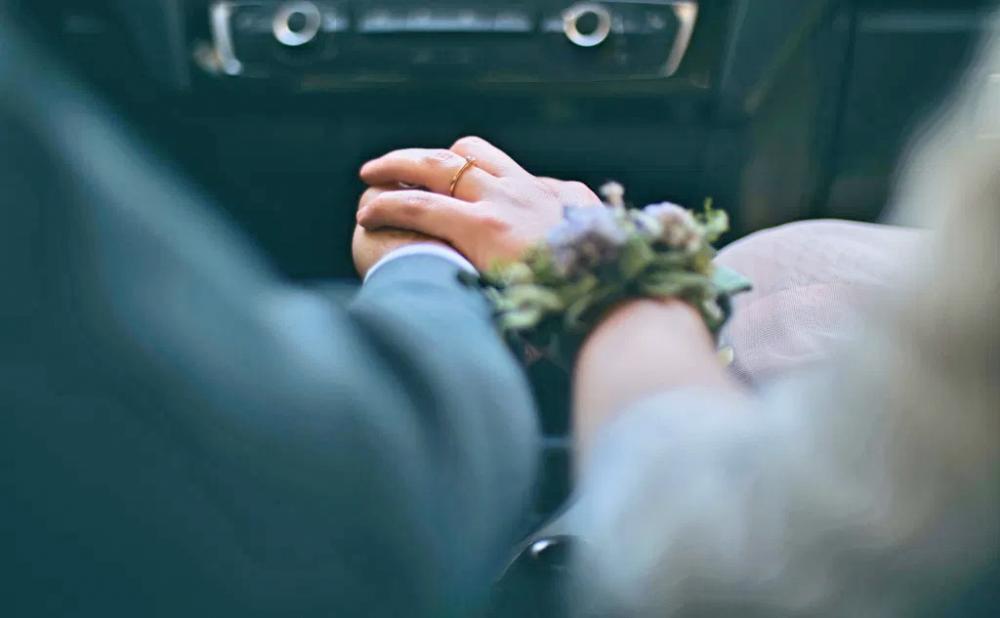lifestyle
Elements Of A Modern Wedding Celebration
If you’ve chosen to have a Wedding Celebrant for your big day, it’s likely that you’ll be looking for some unique and memorable wedding ceremony elements that not only help your wedding stand out from the crowd but also inject deeper meaning into your ceremony.
Here's just a few that I've been involved with, and you might like to think about for your own special occasion:
Signing and Witness Ceremony
What it involves: A brief ceremony involving the couple and two to four witnesses. The couple and the witnesses each sign a keepsake parchment, which is presented to the couple to keep after the ceremony.
This is your bread and butter, and as simple a ceremony as you can get. That said, many couples love to have this symbolic element, despite the fact that it has no legal basis at all – for the time being, celebrant-led ceremonies are not legally binding, although this is set to change in the not-so-distant future. However, signing a special keepsake parchment in front of friends and family can make things feel more ‘official’ than they were at the registry office a few days before the actual wedding day.
Unity Sand Ceremony
What it involves: Each person is represented by two flasks of sand in differing colours. The sand is poured into one flask and mixed together, representing the bride and groom joining together in marriage.
This is a beautiful ceremony that is popular with many couples and can be expanded to involve lots of close (and even extended!) family members as desired. You need to choose the colours beforehand, and you can choose colours that go well together or not; contrasting colours can be used to symbolise two very different people coming together as one in spite of these differences. You’re also left with a beautiful keepsake after the ceremony which can be proudly displayed anywhere in the home.
Ring Warming Ceremony
What it involves: The couple’s wedding rings are passed around the congregation in a pouch or other container. Guests are invited to pass on a thought or good wishes to the couple as the rings pass through their hands.
This is an element that should take place over the course of the first half of the ceremony, although you’re free, of course, to adapt it as you see fit. The wedding rings are placed in a box and passed around the guests, who will take a moment to clasp the rings in their hands and pass on their good wishes to the couple. The rings will (hopefully!) return to the couple at the front just in time to put them on each other’s fingers!
Unity Tree Ceremony
What it involves: Each couple brings soil (perhaps from somewhere significant) and the soil is mixed together and a seed planted within it. Nurturing and encouraging the tree to grow (and pruning it when necessary) is a symbol of the couple’s marriage.
If you’re thinking about something slightly bigger than the Unity Sand Ceremony, this might be the one for you. It works particularly well if the couple hails from vastly different places in the world, as the mixing of earth from different countries can feel extremely symbolic. The seed planted can be anything from a small flower to a large tree, but be aware that you’ll need to care for the plant long after the honeymoon period is over!
HandFasting Ceremony
What it involves: The hands of the couple are tied together with ribbons or cloth in the shape of the infinity symbol, to symbolise the bringing together of the two hearts in a union of strength and unity forever.
Originally a Celtic and Pagan tradition, this is one of the most popular elements in modern non-religious weddings. Everything can be customised, from the colour of the ribbons to the number of people involved; this works particularly well if either partner has children already, as it can symbolise not only the couples coming together but also their existing families. Highly recommended for everyone.
Eras Ceremony
What it involves: 13 coins, each of which represents the twelve months or moons of the year, with the thirteenth representing the honeymoon, are dropped by one partner into the other’s hands, and vice versa. If all the coins are caught successfully, the marriage will be long and happy.
A short, simple, yet precious ceremony, the Eras (or Coin) Ceremony allows the couple to come home with a little bit of ‘bling’ that will always remind them of their special day. The coins can be silver or gold-plated – well, any type of coins you want, really – and come in a beautiful and ornate container where they’ll stay safe for as long as you need them to be.
Unity Candle Ceremony
What it involves: A large, unlit candle stands in the centre of the venue, and the couple each lights their own candle, before bringing their flames together to light the large candle in the centre. This represents two becoming one.
This ceremony is a beautiful visual representation of love and can be scaled to incorporate mothers, fathers and other family members as required. The bringing together of two flames into one is hugely symbolic, and your guests will really enjoy being able to see this representation of your love right in front of their eyes. You can even keep the candle afterwards if you like.
Wishing Tree Ceremony
What it involves: Each guest receives a luggage-type tag or card, which they write their wishes for the couple on. This is then hung on a tree or placed in a jar for the couple to take home.
This is a really cool way to get all your friends to write down nice things about you! The ‘tree’ in this element can be substituted with a jar or anything else you can hang things on, and the ‘luggage tags’ can be specially designed in the shape of leaves, hearts, rings, or whatever you fancy.
If you have any questions about any of these ceremonies then Mark, a professional Celebrant himself, would be happy to tell you more. Mark can be contacted by email:
markyouroccasion@gmail.com.









